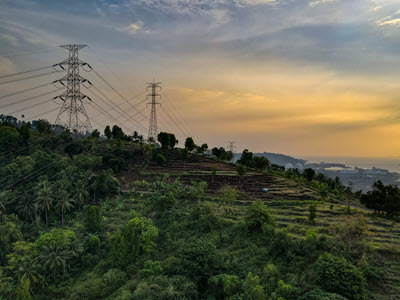Key findings from the Pacific Energy Summit
The State of Global Energy Markets and Implications for the Asia-Pacific
Key Findings from the 2022 Pacific Energy Summit
On October 31–November 1, NBR partnered with Universiti Teknologi MARA (UiTM) to host the 2022 Pacific Energy Summit under the theme “Understanding Southeast Asia’s Vision for Energy and Climate Security in the Indo-Pacific.” Participants explored prospects for regional coordination and pathways for successfully navigating the geopolitics of energy transitions.
Energy demand is returning to pre-pandemic highs, with much of this growth concentrated in the Indo-Pacific. In 2021, many countries in the region redoubled their efforts to realize a more secure and sustainable energy future, including through updating their commitments for the 26th UN Conference of the Parties (COP26) in Glasgow and announcing net-zero pledges. At the same time, countries continued to navigate an uneven economic recovery from the pandemic. Recent challenges will affect both the success and prioritization of these goals. In 2022, disruptions to energy supply chains and markets spurred by Russia’s invasion of Ukraine contributed to a heightened sense of energy insecurity. Other energy producers have struggled to close the gap in supply, while consumers have reassessed how they will meet demand. Although cooperation between countries can help address these conflicting needs, collaboration must be considered as part of the geopolitical context in the Indo-Pacific.
Key Findings
1. Diversifying and securing the energy system
- The current energy crisis has exposed different pressure points in security of global energy supplies. Preparing for these kinds of disruptions by diversifying energy sources and strengthening supply chains, including for critical minerals and new energy sources, is key.
- Southeast Asian countries, along with the Republic of Korea (ROK) and Japan in particular, have expressed renewed interest in nuclear power as a complementary energy source in a net-zero future. With energy demand continuing to grow in Southeast Asia, and with ASEAN nations importing more and more of their fossil fuels, the energy security implications have become significant. Small modular reactors (SMRs) appeal to several Southeast Asian countries, such as Indonesia and the Philippines, which coincides with a rising interest in developing SMRs in key partner countries like the ROK, the United States, and Japan.
- In the short term, countries in Southeast Asia must ensure that oil, gas, and other fuel supplies meet the shortages and price spikes of 2020–22. In the longer term, these nations must continue their economic development and improve people’s access to energy, for all the socioeconomic benefits that these processes can bring. Moreover, both short- and long-term needs must be paired with the urgent action required to reduce greenhouse gas emissions in the face of the pressing impacts of climate change.
2. Mobilizing investment for the energy transition
- The window of opportunity for action is small. The long construction times and lifespans of power plants or other infrastructure, coupled with the urgency of reducing carbon emissions, mean that investment decisions made before 2025 will determine what kind of future we start building by 2030 and will be critical to make sufficient progress toward achieving net-zero pledges by 2050.
- Energy transition plans across the region are contingent on cutting-edge fuels or technologies that are not yet economically deployed, such as hydrogen or carbon capture and storage. Identifying partnerships that can drive commercialization and deployment of these technologies will be critical for both developed and developing economies alike.
- New investments must be focused on areas where there is the most need. In the power sector, generation sources like solar PV farms are relatively easier to finance than transmission infrastructure and demand-side management projects, leading to insufficient support for the latter. Similarly, hydrogen fuel needs more downstream investment in supporting infrastructure and distribution to match upstream production and to ensure a balanced transition that avoids stranded investments.
- Recent increases in interest rates, driven by uncertainty and inflation, have changed how both developers and financiers think about lending, causing investors to prioritize earlier returns and disincentivizing longer-payback projects, often to the detriment of alternative energy projects.
3. Planning for step-by-step transitions and tailored paths for each economy
- Although higher prices for gas, oil, and coal should in theory make other sources, such as cost-competitive renewable energy sources, more attractive, price spikes do not appear to be causing drastic change in the transition to lower-carbon fuels. In some cases, this has led economic leaders to temper their ambitious decarbonization plans to minimize supply insecurity.
- This trend highlights the dangers of green inflation. In Europe, for example, flagging winds and high cooling demand combined to drive up LNG prices, while in Vietnam impressive solar PV capacity is often curtailed due to insufficient grid flexibility.
- Rapid energy transitions can open up new pathways, but also lead to stranded assets if economies do not have step-by-step plans to scale down carbon-intensive fuels and scale up lower-carbon fuels. Given limited resources or capacity, minimizing stranded assets is an important goal for countries in Southeast Asia and requires a comprehensive strategic plan that nations update regularly to reflect changing realities.
4. Improving agency and access in the energy transition
- A consensus has emerged among government leaders on the need to transition to a low-carbon future, but a broader, societal consensus on how best to transition to that low-carbon future has not coalesced. This social consensus affects the bankability of projects and requires engaging with stakeholders at all levels. Energy issues cannot be solved by the energy sector alone and must include community-level engagement.
- As a growing number of countries are politicizing energy, with Russia being the most recent example, it is important for developing countries in Asia to have a unified voice in international forums. COP 26 saw progress on this front. Going forward, ASEAN can potentially serve as a negotiating block with OPEC or other energy trade organizations.
- Subnational and local perspectives must also be considered in the energy transition in Southeast Asia, especially as regional countries work to increase energy access and achieve their development goals. Engaging with both urban and rural communities can help countries like Malaysia maximize the benefits of their renewable energy investments and ensure that the transition to net-zero emissions simultaneously achieves the goals of a just transition.



